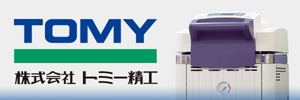PB-028:Measurement of Fusarium proliferatum by real-time PCR method
NARO Agricultural Research Center
Fusarium proliferatum is plant pathogen that causes Crown Rot of Asparagus. However, since there is no selective medium of Fusarium proliferatum, it takes effort to investigate the Fusarium proliferatum density in soil. Therefore, in this study we tried to quantitatively detect the Fusarium proliferatum in soil using real-time PCR.
The primers used in this analysis is a CLPRO1 and CLPRO2. In order to confirm the species-specificity of the primer pair, PCR was carried out. PCR was carried out DNA extracted from the isolated fungi. As a result, DNA extracted from Fusarium proliferatum was amplified, DNA extracted from Fusarium oxysporum was not amplified. Next, we examined the real-time PCR conditions, the following conditions are considered appropriate Real-time PCR conditions are as follows. 95 ℃ -3 minutes, (95 ℃ -10 seconds, 62 ℃ -10 seconds, 72 ℃ -30 seconds), and × 50 cycles, 95 ℃ -10 seconds, the dissolution curve analysis was carried out by measuring from 65 ℃ to 95 ℃ at every 0.5 ℃. By dissolution curve analysis, single peak was obtained. Therefore, the possibility of the amplification of the region except for the target seemed to be low.
In addition, adjust the spore suspension of Fusarium proliferatum, was added by changing the amount the suspension light colored andosol and gray lowland soil (sterilization), Fusarium proliferatum density was measured in the soil by using a dilution plate technique. The real-time PCR was carried out for DNA extracted from the soil, and the Ct value was calculated. The soils were analyzed by real-time PCR, negative correlation (R2=0.959) was observed between the Ct value and the fungal density. The correlation could not recognize the difference between soils.
keywords:*Fusarium proliferatum*,Asparagus,Crown Rot,Real-time PCR




